Intel’s 13th Gen processor lineup has been out for a while now as we had the chance to take a look at the flagship Intel Core i9 13900K desktop processor late last year. This time, let’s dive into the mobile space with the new Intel Core 13th Gen Mobile lineup. Coming from the 12th Gen last year, Intel continues its push with its industry-leading hybrid core architecture as the new 13th Gen processor has more P and E cores compared to its predecessor. The added cores, improved Thread Director, and Power Efficiency make the 13th Gen Mobile CPUs great not only for gaming but also for productivity as well.
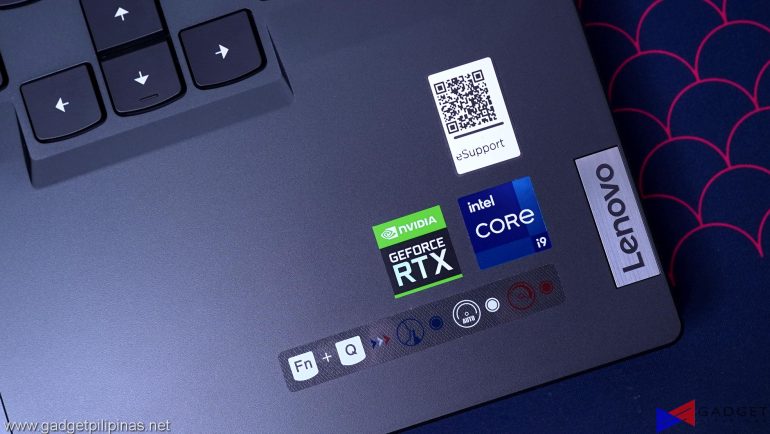
Representing the 13th Gen Mobile Processors is one of Intel’s flagship i9 Processors from the HX lineup, the Intel Core i9 13900HX packed inside the Lenovo Legion Pro 5i Gaming Laptop. Paired with the Intel Core i9 13900HX are 16GBs of DDR5 4800MHz Memory, an RTX 4060 GPU, and a 1TB SSD. While the Legion Pro 5i is initially a gaming laptop, its powerful specs centering around the Core i9 13900HX make it an ideal laptop for gamers and creators thanks to its well-rounded performance. More on this as we take a deeper dive into the Core i9 13900HX and Legion Pro 5i.
Intel 13th Gen Architecture
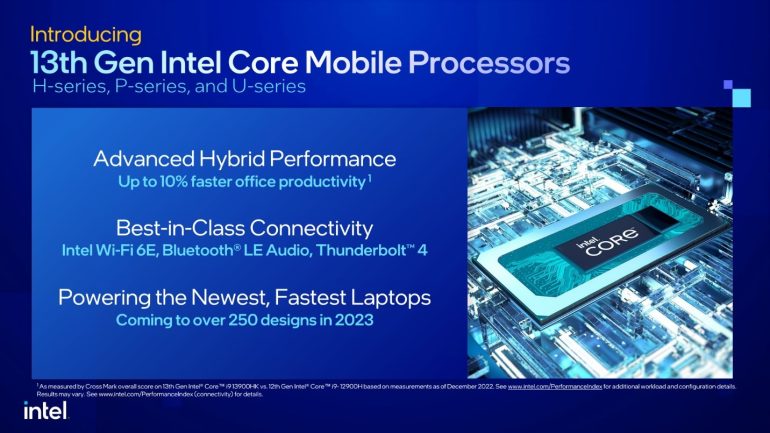
Intel continues to double down on its Hybrid Core Architecture by adding more cores to its Intel 13th Gen lineup. The added P-cores and E-cores enable 13th Gen powered devices to do more than just gaming. Both P and E cores work together to deliver optimal performance for specific workloads. P Cores are Intel’s high-performance core that mainly handles single threaded performance while E Cores are efficient CPU cores that focuses on power efficiency. How do they work together? For example, when gaming or video editing, the P-cores handle these demanding applications while the E-cores handle lighter tasks like web browsing, windows updates, and background virus scans. The intelligent and seamless core assignments are handled by Intel’s Thread director. The Thread Director acts as a traffic controller, directing workloads to the most efficient core for that task. It optimizes core utilization, making sure that each core is being used to its fullest potential. Like the previous generation 12th Gen, the new 13th Gen CPUs support both DDR4 and DDR5 memory giving the consumers the option to save up especially if they don’t need the extra performance.
Intel 13th Gen Mobile Processor Lineup
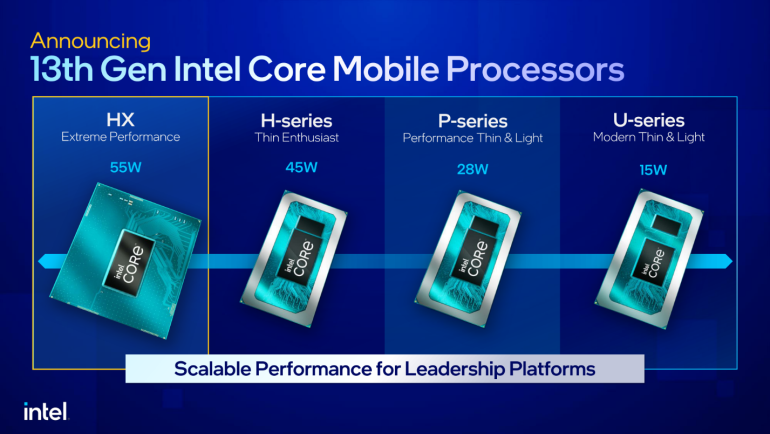
Intel’s 13th Gen Mobile Processor Lineup has a very versatile product stack that can cater to all kinds of users and workloads. Starting with the U series, these processors are aimed toward business and daily use laptops that do not require a discrete GPU for gaming. P series are slightly more powerful variants of the U series with a higher rated power for that extra computing performance. H series processors are the mainstream line used for productivity, content creation, and gaming with its robust 45W TGP and high core count configuration. Lastly, for those wanting to pack almost near desktop level of performance, Intel’s HX series processors will give you the best of both worlds in terms of a desktop’s performance and a laptop’s portability.
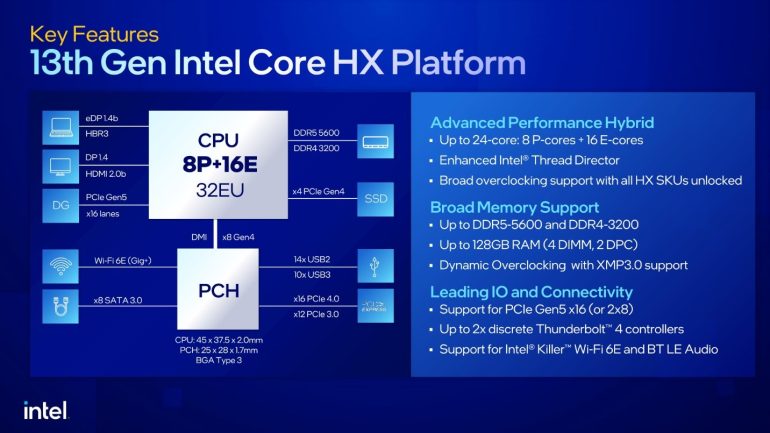
Representing our 13th Gen mobile processor is the Intel Core i9 13900HX processor with 8 P-cores and 16 E-cores for a total of 32 threads. Clockspeeds are rated at 2.2GHz base and 5.4GHz boost for the P-cores while the E-cores have a base frequency of 1600 MHz and a boost clock of 3900 MHz. Like the rest of the Intel 13th Gen mobile lineup, the Core i9 13900HX supports DDR4 and DDR5 memory up to 3200MT/s and 5600MT/s, respectively.
Legion Pro 5i
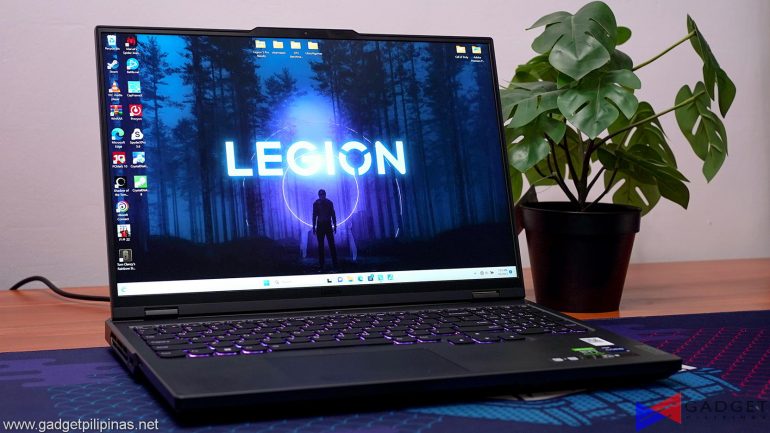
Housing the Intel Core i9 13900HX is the Gen8 of the Legion 5i Pro gaming laptop. We dubbed the previous generation Legion 5i Pro Gen7 was dubbed as the gaming laptop to beat this 2022 and it seems like it’ll likely be replaced with this generation’s 5i Pro. The Legion 5i Pro Gen8 starts at Php 112,800 with the Intel Core i7 13700HX variant. Our specific review unit comes with an Intel Core i9 13900HX, 16GB DDR5 4800MHz RAM, 1TB SSD, and a 140W RTX 4070 which retails for Php 139,995.
The Legion Pro 5i sits a tier below the flagship Legion Pro 7i, both of which have integrated AI features to take advantage of the powerful Intel Core series processors and Nvidia RTX 40 series graphics. The Lenovo Engine+ paired with Legion’s Coldfront 5.0 cooling system ensures maximum and consistent performance that can handle anything from gaming, streaming, content creation, and productivity.
Legion Pro 5i Display
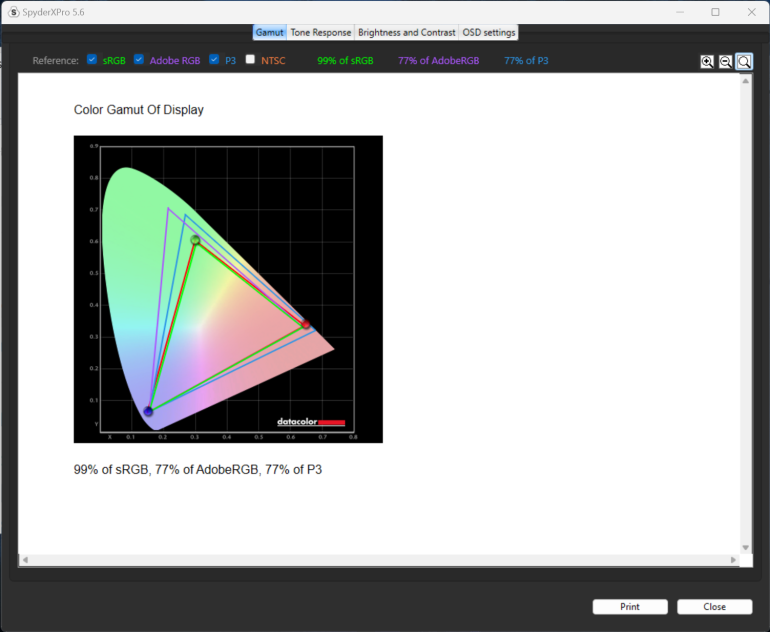
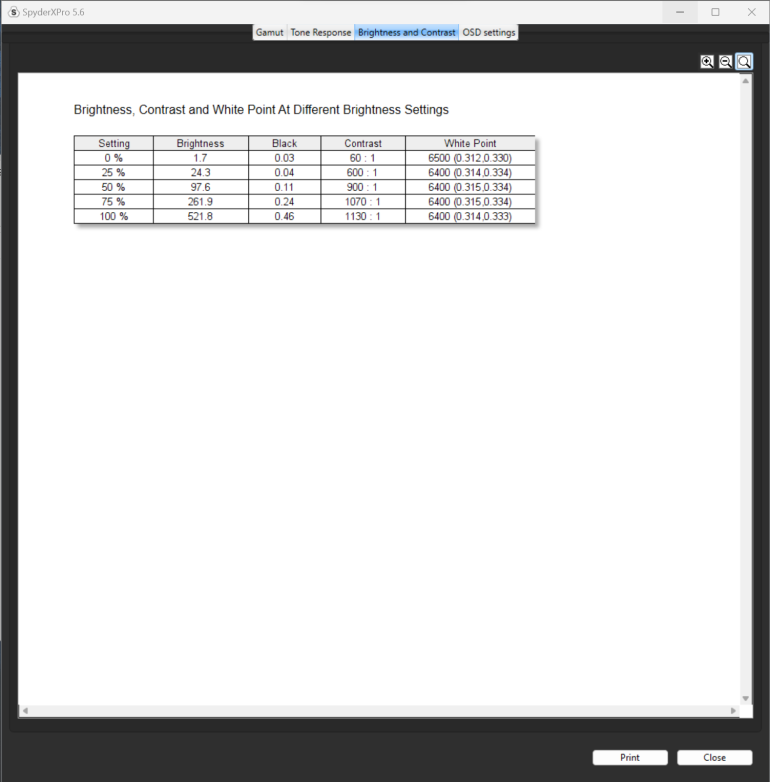
The Legion Pro 5i boasts a stunning 16” 16:10 2560x1600p 240Hz display rated at 500 nits. Our SpidyerX Pro Display Analysis tool measured a color gamut of 99% sRGB, 77% AdobeRGB, and 77% DCI PE coverage making the Legion Pro 5i passable in professional photo and video editing. We also measured a peak brightness of 512.8 nits meaning that its display is bright enough to be usable in most environments.
Benchmark Setup and Test Methodology
We benchmarked the Lenovo Legion Pro 5i Gen8 together with its different power settings found in the Lenovo Vantage Software – Quiet, Balanced, and Performance. The main purpose of benchmarking power profiles will show how aggressive or conservative the manufacturer is in terms of thermal management. These profiles will affect the CPU and GPUs’ boosting behavior in terms of duration and max clock speed which will translate to higher scores and stable framerates.
The latest build of Windows 11, WHQL-certified drivers are used for our benchmarks. We use CapFrameX 1.7.2 and RTTS 7.3.5 as our FPS capture and analysis tool for our gaming benchmarks. Readings such as temperatures and power consumption are recorded using HWInfo64. Other relevant software is used for cross-checking and error analysis. Games are benchmarked using the laptop’s native resolution which is 2560x1600p for the Legion 5i Pro.
Synthetic and Productivity Benchmarks
SuperPI 32M
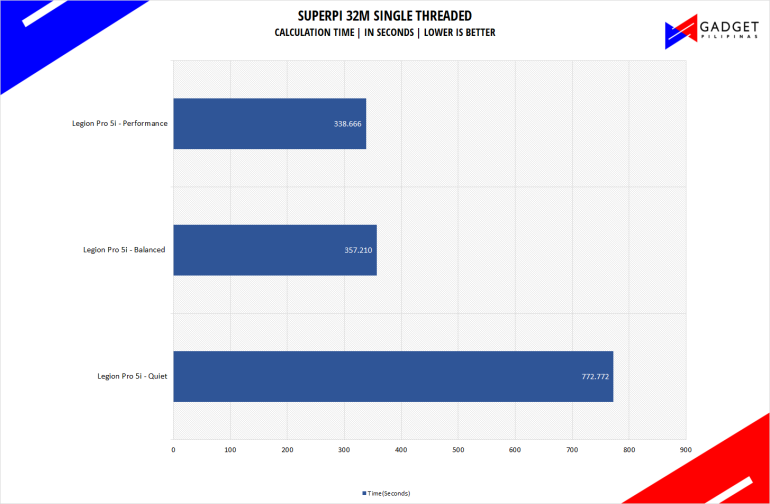
SuperPI is a single-threaded benchmark application that lets the CPU calculate Pi(π) to the nth digit. In this benchmark, we selected the Pi calculation to 32M, the highest available for the app.
CINEBENCH R23
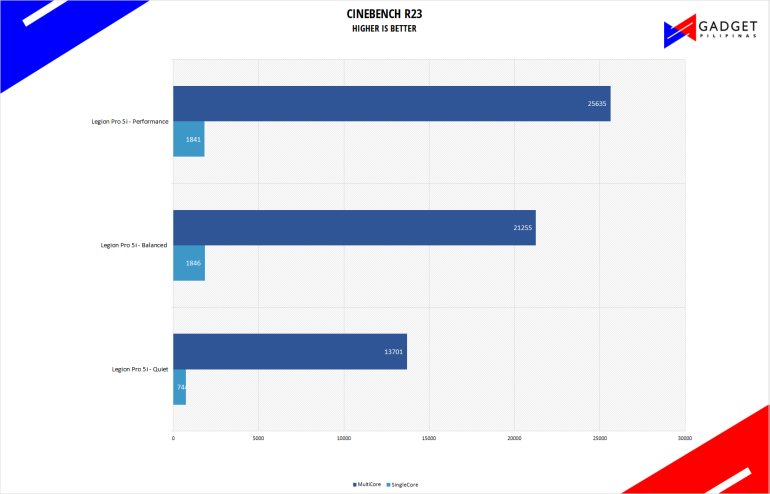
Maxon’s Cinebench benchmark is one of the most iconic benchmark applications used by reviewers and enthusiasts. The latest Cinebench R23 uses the latest rendering architectures, including Intel’s Embree ray tracing technology and other advanced features from AMD and Intel that allow users to render the same scene on the same hard.
PROCYON
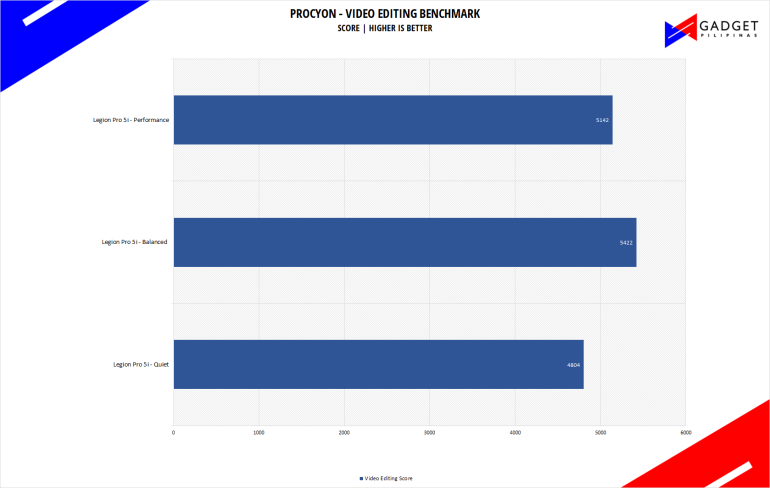
Procyon benchmark suite is developed by the UL, the same team behind 3DMark and PCMark benchmarks. The UL Procycon video editing benchmark uses Adobe Premiere in a typical video editing workflow. The benchmark starts by importing two video project files with various edits, adjustments, and effects – the second project uses several GPU-accelerated effects. Each project is exported in 1080p with H.264 encoding and again in 4K with HEVC H.265. The reported score is based on the time taken to export all four videos.
wPrime 1024M
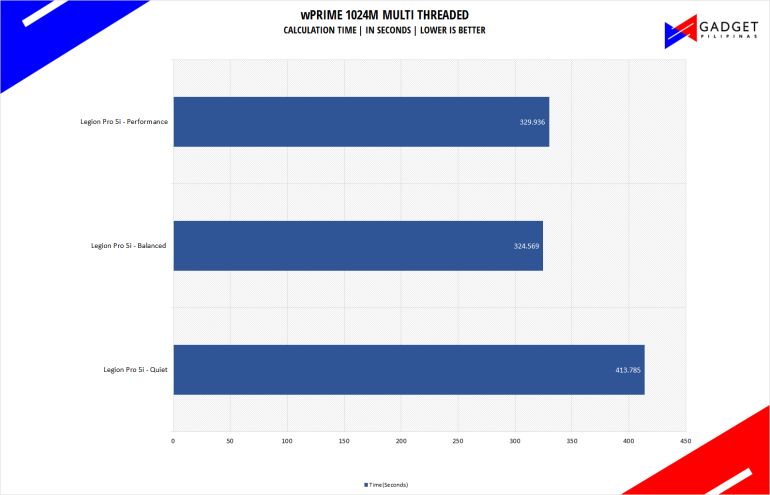
wPrime is a benchmark tool similar to SuperPI, but the former takes on finding prime numbers using Newton’s Method. The benchmark is set to calculate 1024 million prime numbers, and the performance is measured according to calculation time.
V-RAY
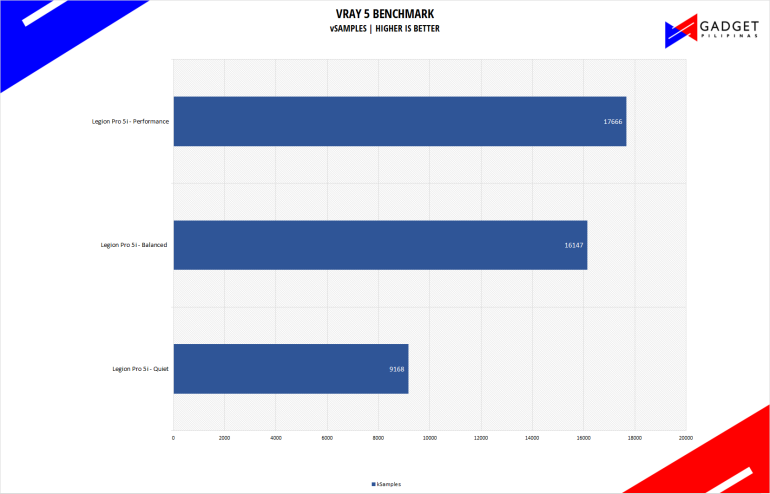
V-Ray Benchmark is a stand-alone version of V-Ray developed by Chaos Group. It is designed to test the CPU and GPU by rendering sample scenes at a fixed amount of time. V-Ray is a plug-in mostly utilized by 3D computer graphics software applications mainly for industrial design, product design, architecture, film, and video game production. V-Ray is not limited to 64-threads as it supports multi and mega-threading.
BLENDER
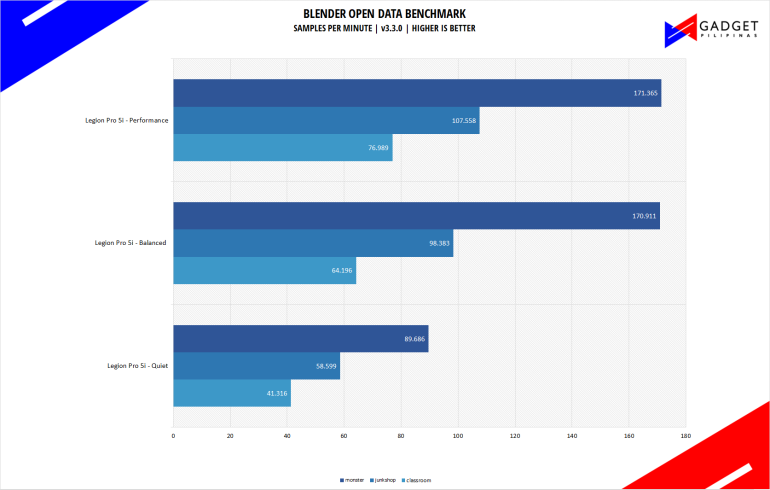
Blender is a widely used, free, open-source 3D creation suite. It supports the whole 3D pipeline process from modeling, rigging, animation, simulation, rendering, and even motion tracking. Blender has become a standard for CPU benchmarks with the BMW27 and Classroom scene most used. This prompted the company to release Blender Open Data Benchmark in 2018, a benchmark-specific version allowing users to run a preset benchmark and share the results online like 3D Mark.
PCMark10
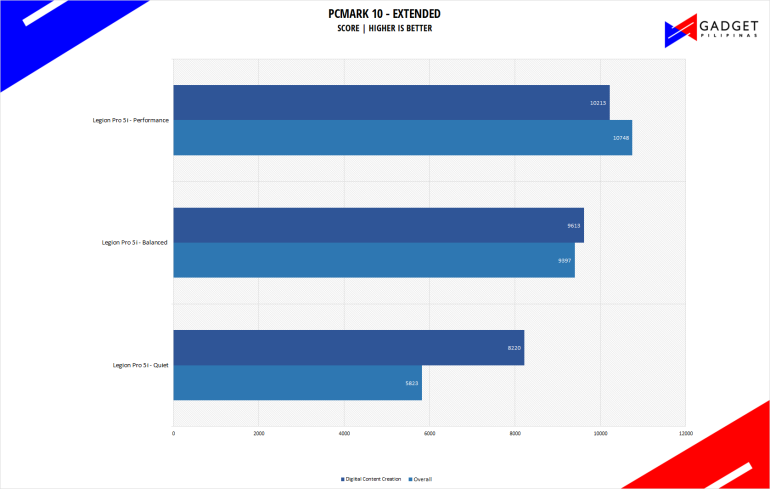
From the same developers of the popular game benchmarking tool 3DMark, PCMark 10 is a benchmarking app for measuring a whole PC’s performance. It covers a wide variety of tests to reflect common tasks performed in a modern workplace. We selected PCMark 10’s extended benchmark and reported both the overall score and Digital Content Creation Score.
CORONA RENDERER

Corona Renderer is an unbiased photorealistic render available for Autodesk 3Ds Max, Maxon Cinema 4D, and as a stand-alone application. Its popularity, similar to Blender, led Chaos Group to develop a benchmark version of the app which runs using Corona Renderer 1.3. Workstation systems, especially CPUs, can utilize Corona Benchmark as up to 72 threads can be used in the benchmark, making it very suitable for CPUs with various price segments.
GOOGLE OCTANE 2.0
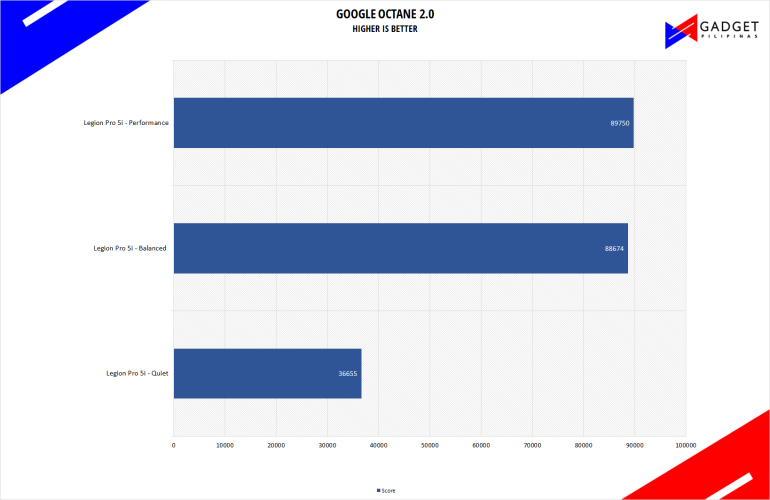
Google Octane 2.0 is a benchmark that measures a Javascript engine’s performance by running multiple tests representing different use cases of JavaScript applications. While Google Octane is retired and no longer maintained, it is still a good representation of today’s dynamic, interactive web applications. Our Google Octane 2.0 is run on Microsoft’s latest Chromium-based Edge browser.
BAPCo CROSSMARK
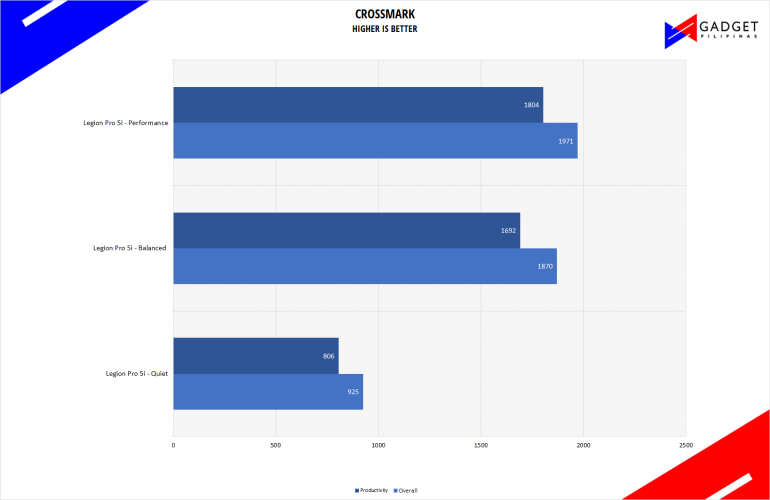
Crossmark is one of the few native cross-platform benchmark tools available for Windows, Android, Linux ChromeOS, iOS, and macOS. It measures overall system performance and system responsiveness using models of real-world applications making it a great comparison point across multiple platforms.
GeekBench 6
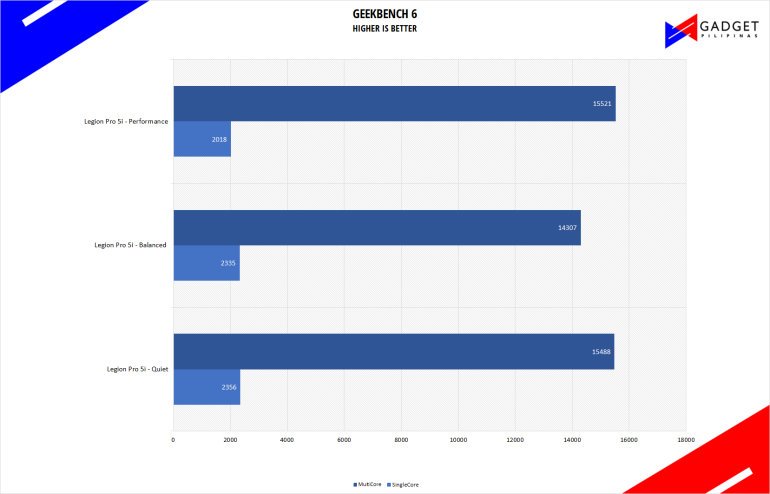
Geekbench is a multi-platform benchmark used to gauge CPU performance and compare them across Windows, Mac, and Mobile. Geekbench 6 is the latest version and doesn’t rely on memory more than the previous Geekbench 4, making it a great tool to measure both single-core and multi-core CPU performance.
Legion Pro 5i Gen8 SSD Benchmark
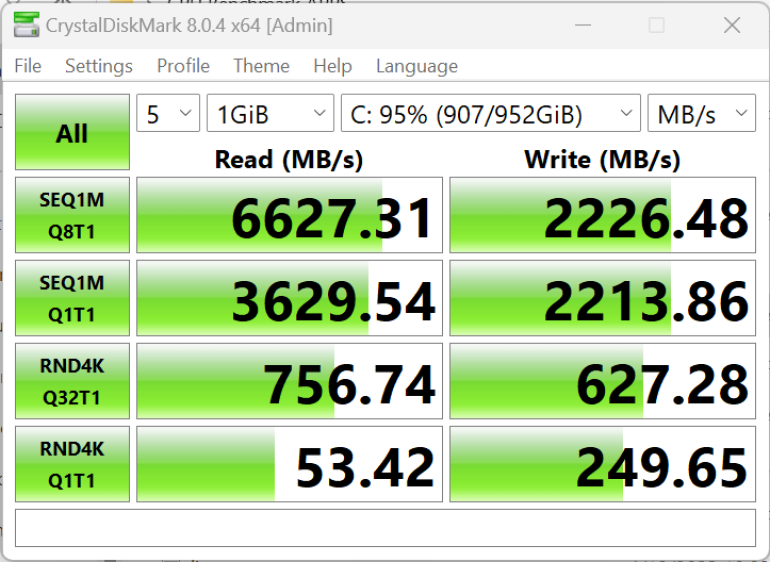
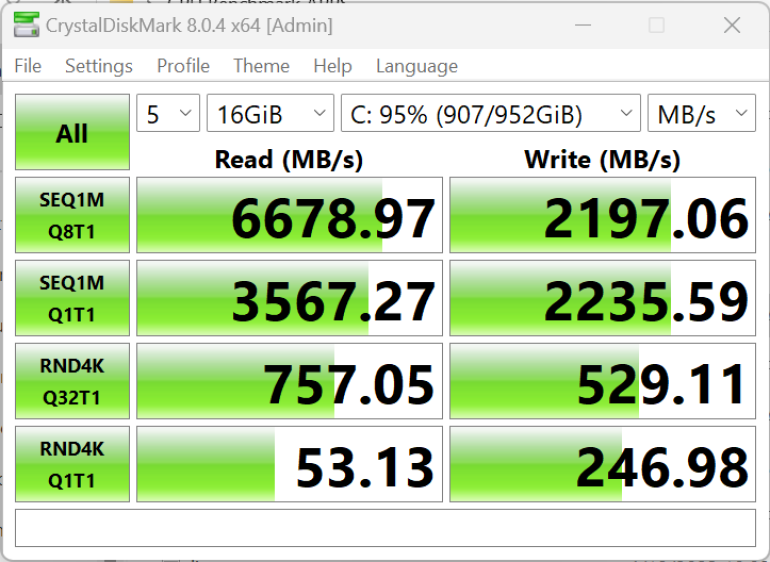
Like its Legion Pro 7i bigger brother, the Legion Pro 5i uses the Samsung MZVL21T0HCLR 1TB OEM SSD with a rated speed of 7,000MB/s read and 5,100MB/s write. The Samsung PM9A1 SSD is a high-performance Gen4 SSD that’s commonly used in higher-end models. Our quick CrystalDiskMark Benchmark confirms the rated speeds of the drive despite being near full capacity.
COUNTER-STRIKE: GLOBAL OFFENSIVE
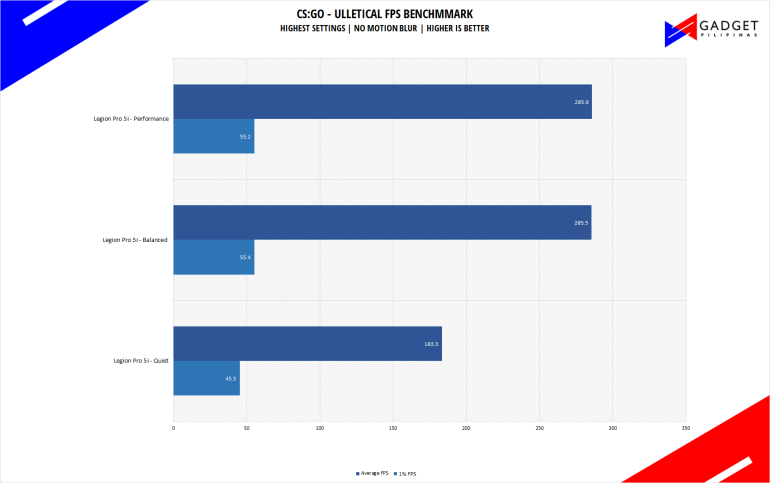
Counter-Strike Strike: Global Offensive aka CSGO is a 11-year old first-person shooter title that’s still widely popular despite its old Source Engine. CS:GO is a great game to test out CPU performance as the game is heavily CPU-dependent like any other FPS title. Our CS:GO benchmark process uses ULLETICAL’s FPS Benchmark workshop mod to measure the hardware’s performance.
DOTA 2
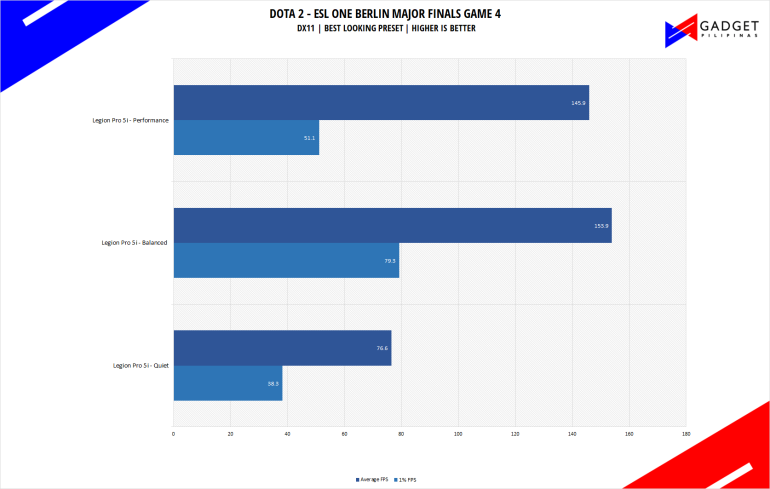
Most gamers play at least one of the following free-to-play titles: League of Legends, CS: GO, Dota 2, and/or Fortnite. Dota 2 is a good representation of the F2P titles as it is the most demanding game in the spectrum. The benchmark will give you an idea of the graphic card’s relative performance on other lesser demanding titles. Our benchmark sequence is based on a replay of OG vs. Liquid in the TI9 grand finals from the team fight that happened from 28:30 to 29:30.
SPIDERMAN MILES MORALES
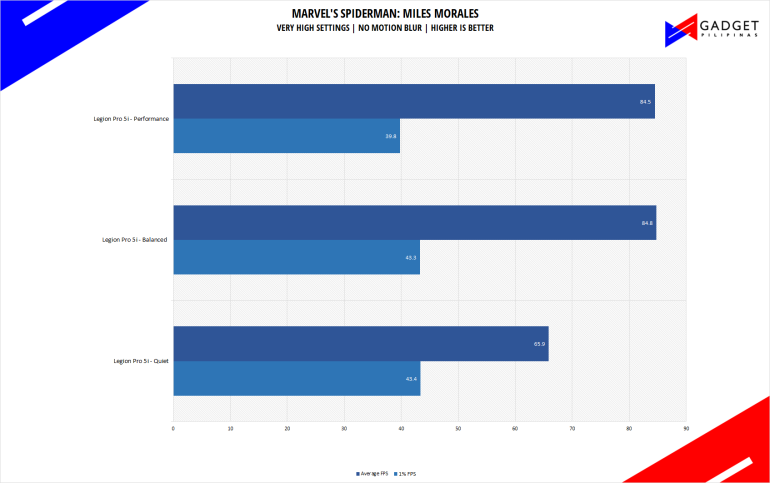
Marvel’s Spider-Man: Miles Morales is developed by Insomniac Games and published by Sony is one of the most popular PC port titles last 2022. It’s one of the few modern game titles that support upscaling technologies FSR, DLSS, and XeSS making it a great title to use for benchmarks.
Far Cry 6
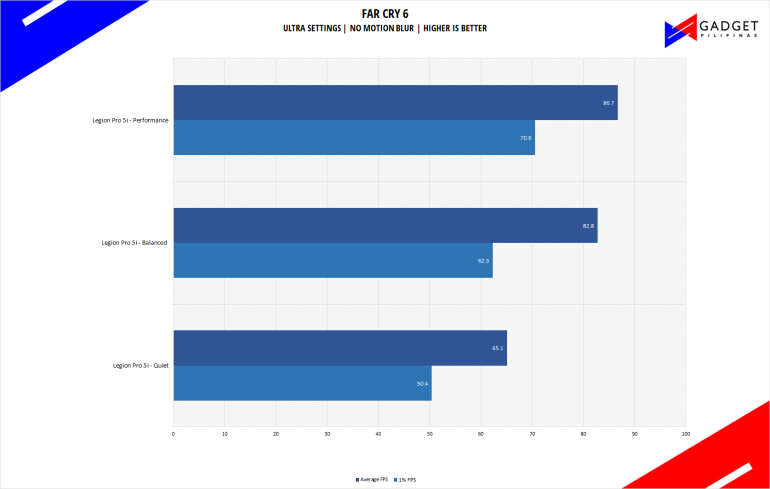
FarCry 6 is an FPS game published by Ubisoft and uses the Dunia engine. It heavily relies on and takes advantage of DirectX 12 to render a realistic environment that makes it taxing to both the CPU and GPU. It’s also the first game of the franchise to support Ray Tracing.
Cyberpunk 2077
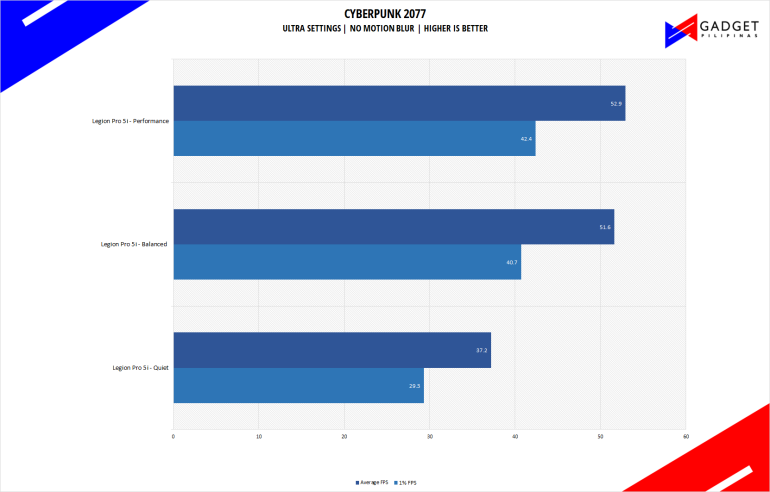
Cyberpunk 2077 is arguably the most hyped game of 2020. Developed by CD Projekt Red, the dystopian open-world, action-adventure RPG sports is one of the most demanding titles to date. Cyberpunk 2077 also supports three Ray Tracing settings as well as DLSS which makes the game a great tool to measure Ray tracing performance for both AMD and Nvidia graphics cards.
Metro Exodus
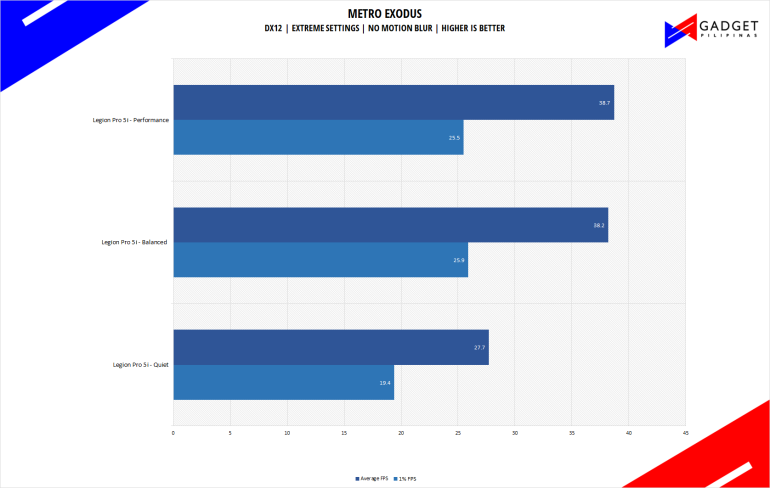
Metro Exodus is the third Metro game trilogy based on Dmitry Glukhovsky’s novels. The game is a first-person shooter with survival horror and stealth elements. The post-apocalyptic game uses 4A Engine by 4A games. Released last 2019, Metro Exodus remains to be one of the most graphically pleasing and demanding games that’s popular to date.
Assassin’s Creed: Valhalla
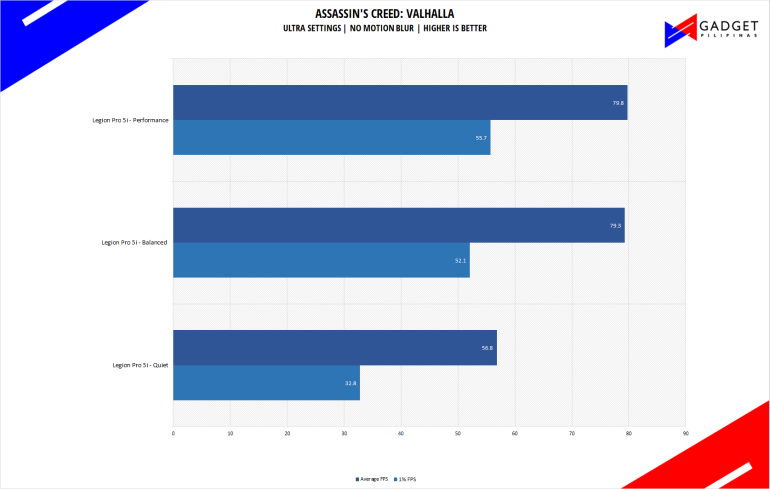
Assassin’s Creed Valhalla is the latest Assassin’s Creed game from Ubisoft Montreal making it the twelfth major installment in the franchise. It uses the AnvilNext 2.0 game engine, an updated version of Rainbow Six Siege’s game engine, and uses the DirectX 12 API.
F1 22
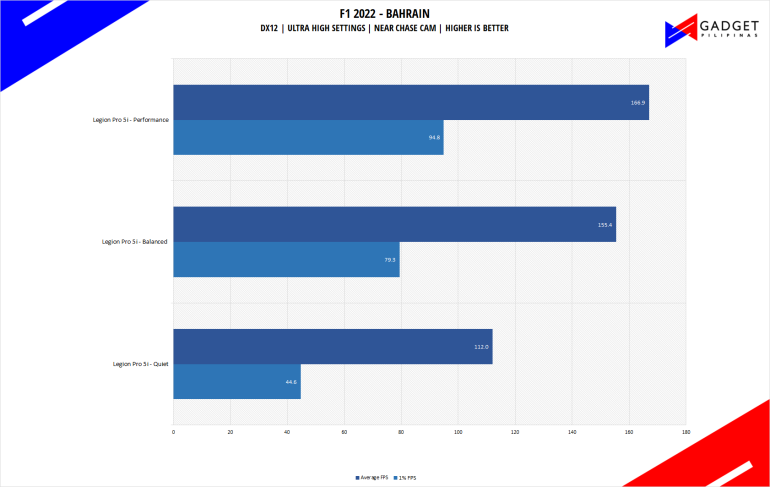
F1 22 is the official video game of the 2022 Formula 1 and Formula 2 championships developed by Codemasters. F1 2022 is the fifteenth installment in the franchise and uses the Ego Engine 4.0. F1 22 is a good representation of racing games thanks to its realistic graphics and fairly demanding spec requirements as well as support for Ray Tracing and DLSS 3.
HORIZON ZERO DAWN
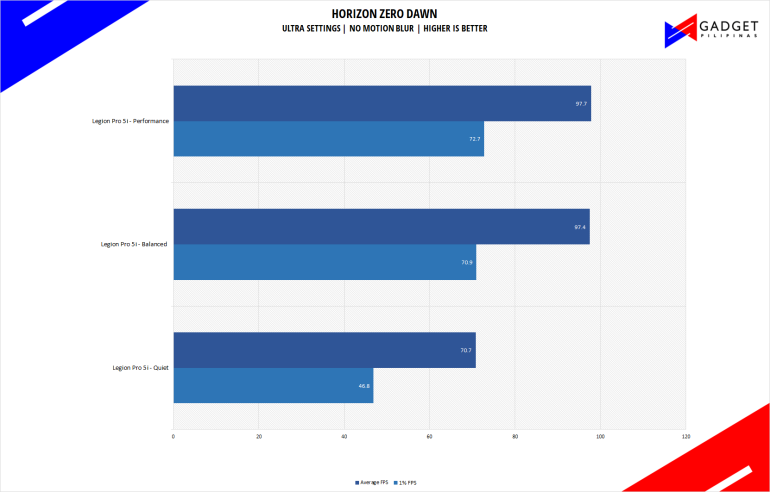
Horizon Zero Dawn is one of the most popular console-port RPG developed by Guerilla Games and published by Sony Interactive Entertainment. Horizon Zero Dawn is a multi-award-winning action RPG, and its popularity resulted in an exclusive Complete Edition game bundle on Steam.
Shadow of the Tomb Raider
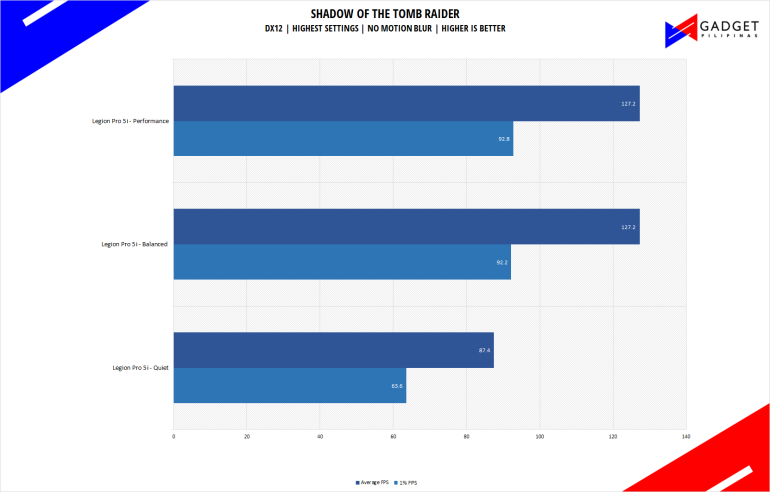
Shadow of The Tomb Raider or SOTR is the latest installment of the Lara Croft Tomb Raider franchise. Developed by Square Enix, SOTR uses the Foundation engine and is further enhanced by Eidos Montreal. SOTR is also one of the first games to come out with Ray Tracing and DLSS support.
Legion Pro 5i Gen8 Temps and Battery Life
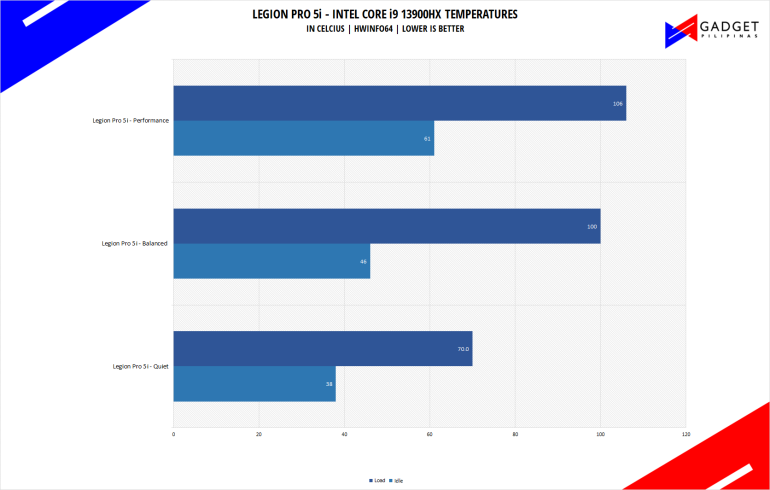
The Intel Core i9 13900HX processor peaked at 106 degrees during our benchmark run. Its quite common among mobile processors to reach near TJmax temperatures but what’s important is that the CPU doesn’t throttle which is the case for the Legion Pro 5i. While it’s four degrees near the TJmax shutdown temperature, we didn’t experience any throttling as seen in our benchmarks through the 1% lows.
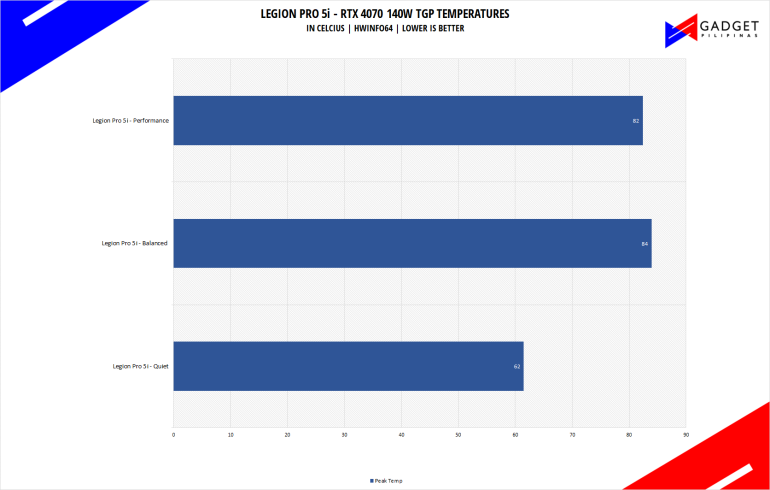
Moving to the RTX 4070 140W TGP GPU, a peak temperature of 84 degrees was observed under the Balanced Profile which is expected, especially for Lenovo devices. The Performance profile prioritizes GPU cooling hence the inverse relationship of the CPU and GPU while the Balanced Profile with AI integration prioritizes the component that’s more needed in a workload which is the CPU as the GPU had a higher temp in this profile. More on this in the performance summary and conclusion section.
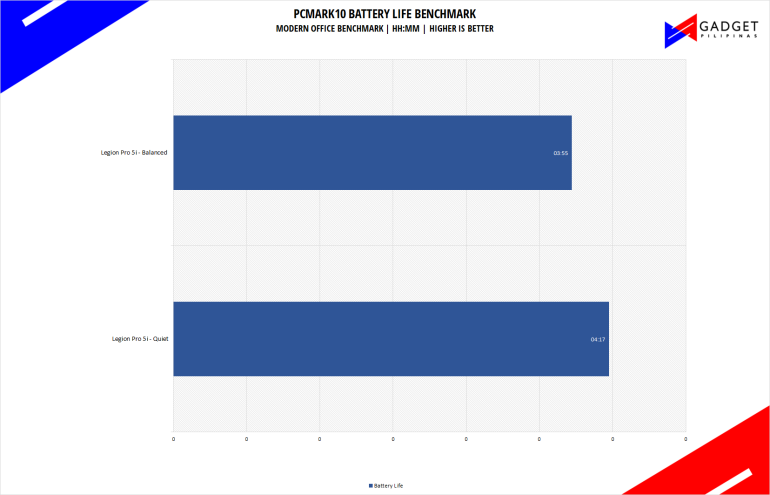
Being a gaming laptop with hefty flagship specs, we only tested the battery life of Legion Pro 5i under the Quiet Profile. The Legion Pro 5i lasted for 4 hours and 17 mins in our PCMark 10 Modern Office Battery Life Benchmark. Considering its specs namely the 13900HX, RTX 4070, and 240Hz WQXGA display and the 80Wh battery, 4 hours and 17 mins isn’t bad for gaming laptop. Of course, we would’ve preferred atleast 6 hours for it to be certified as “work outside slash coffee shop companion.”
Performance Summary and Conclusion
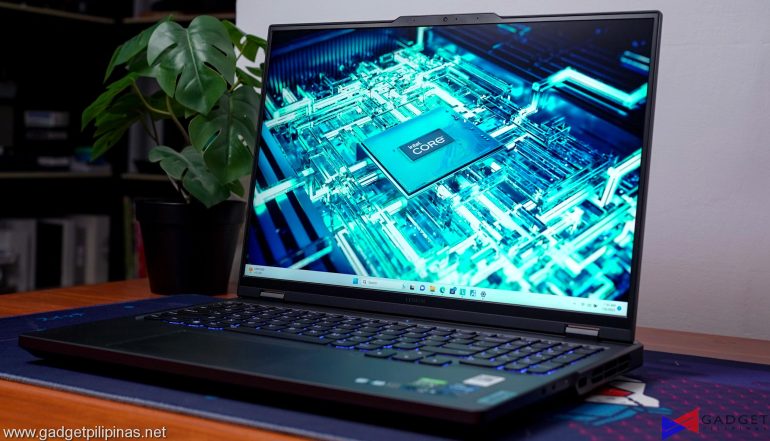
Gaming laptops have gone a long way from being just a no-choice alternative for people needing portability to actually being a solid and practical option for a gaming station especially considering the PC market’s absurd prices. This is largely thanks to the improved IPC of processors, much more with Intel’s hybrid P and E core setup. As shown in our benchmarks, the Lenovo Legion Pro 5i can handle triple-A game titles at high settings over 60 FPS at a 2560x1600p resolution with performance to spare depending on the laptop’s profile. That said, based on the results we recommend the Balanced profile for better CPU cooling and overall performance as the CPU takes a large chunk of workload, especially at higher resolutions. The performance displayed by the Intel Core i9 13900HX and the 175W RTX 4070 makes it closer to a similarly priced desktop.
Overall, the Legion Pro 5i packed with the Intel Core i9 13900HX, 32GB DDR5 Memory, 1TB SSD, and RTX 4070 make for a solid desktop replacement with its near PC levels of performance. Its high core count not only makes it capable of driving triple-A games, but also in rendering, file compressions, and floating point calculations. In short, the device is more than capable of not just gaming, but also in content creation and other productivity-related workloads largely thanks to the more powerful and efficient 13th Gen mobile processors packed inside the Lenovo Legion Pro 5i. Of course, having a flagship-level processor also requires flagship levels specs hence the high-capacity memory, fast storage, powerful GPU, and a stunning display. All of these add up to a hefty sum of Php 139,995. At that price, not many may be able to afford it. Still, when you compare a similarly priced DIY PC(including the display and peripherals needed), the value proposition leans towards more to the Legion Pro 5i. So, if you’re looking for a portable gaming or content creation device without compromising on performance, then the Legion Pro 5i packed with the Intel Core i9 13900HX is a solid choice, especially for those who are always on the go. That said, there are also cheaper variants available of the Legion Pro 5i, specifically the Intel Core i3700HX for Php 112,800.
Intel Core i9 13900HX, Core i7 13700HX and other Intel 13th Gen Mobile processors are available at the following retailers:
Grant is a Financial Management graduate from UST. His passion for gadgets and tech crossed him over in the industry where he could apply his knowledge as an enthusiast and in-depth analytic skills as a Finance Major. His passion allows him to earn at the same time help Gadget Pilipinas' readers in making smart, value-based decisions and purchases with his reviews and guides.






